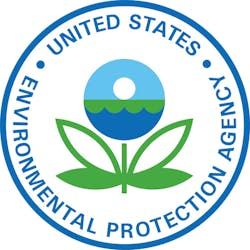BOSTON, JANUARY 20, 2017 -- The U.S. EPA and its partners have launched a technology challenge for an Advanced Septic System Nitrogen Sensor. The total award pool for this phase is $55,000. The Challenge is open for submissions now. Submissions are due on or before March 17, 2017.
EPA has partnered with The Nature Conservancy, USGS and others to launch the Advanced Septic System Nitrogen Sensor Challenge. In Phase I, entrants will be asked to design a nitrogen sensor for use in advanced nitrogen-removal onsite wastewater treatment systems, also known as advanced septic systems, in order to monitor their long-term performance. The top entries will be awarded cash prizes totaling $55,000, and will be given the chance to network with industry leaders, regulators, and advanced OWTS test centers to potentially seek prototype funding.
The Challenge will be managed by InnoCentive, EPA and Challenge partners. The challenge expert advisory committee who will review challenge submissions includes experts from EPA, the New England Onsite Wastewater Training Program at the University of Rhode Island, the Massachusetts Alternative Septic System Test Center (MASSTC), state onsite regulators, the National Onsite Wastewater Recycling Association, the New York State Center for Clean Water Technology at Stony Brook University, and various university engineering programs.
Conventional septic systems are not designed to remove nitrogen, which can lead to problems like nitrogen loading to waterways. This issue is especially important to coastal communities, where excess nitrogen causes toxic algal blooms leading to beach closures and degrades water resources. EPA estimates that over 2.6 million existing systems could be good candidates for advanced septic systems that treat the nitrogen due to their location in nitrogen-sensitive watersheds.
Many communities, state and local governments as well as environmental NGOs are eager and motivated to take action to prevent and reduce nitrogen pollution in sensitive areas. While some have begun requiring installation of advanced septic systems to protect sensitive areas, routinely monitoring the long term performance of these systems is logistically challenging and requires large investments in time and resources. Currently, no sensor for detecting and measuring nitrogen in advanced septic system effluent is available.
EPA and its partners are accepting submissions of ideas for such a sensor until March 17, 2017 at https://www.innocentive.com/ar/challenge/9933926.



